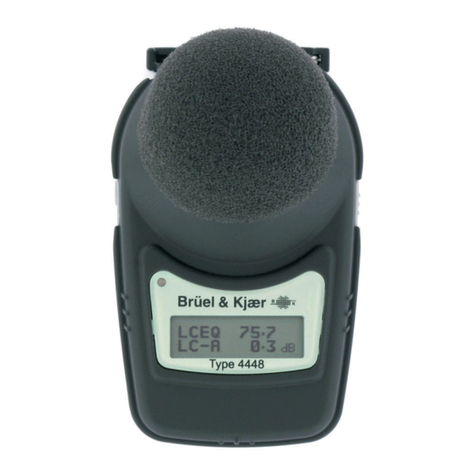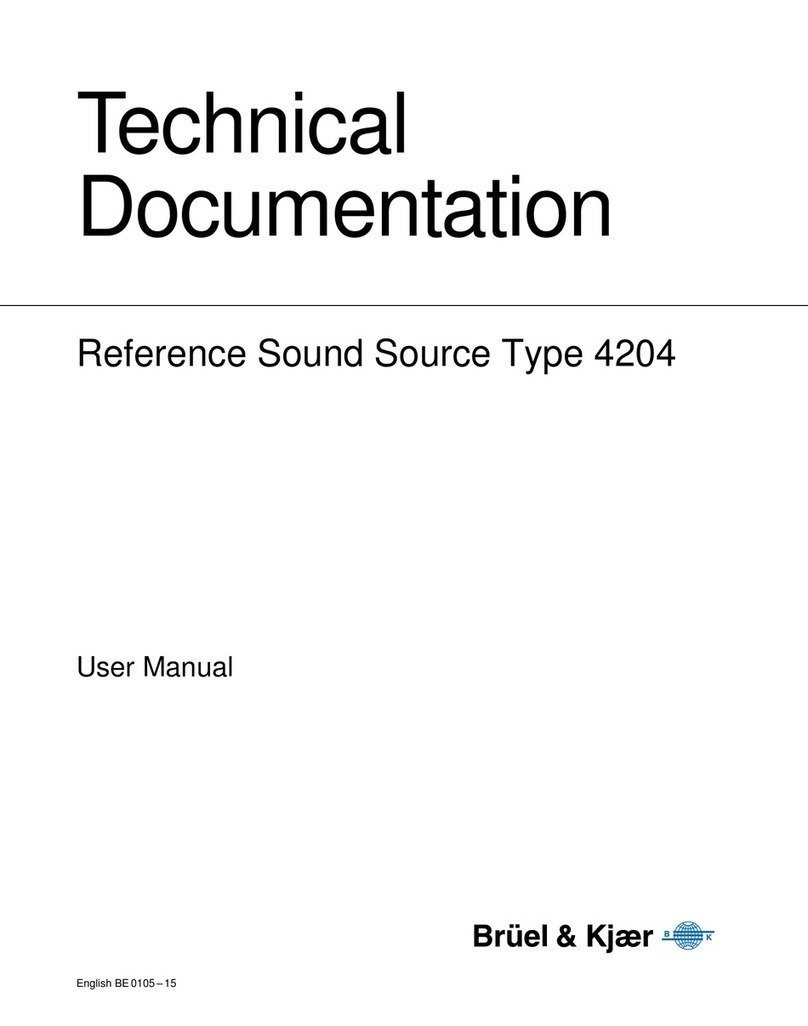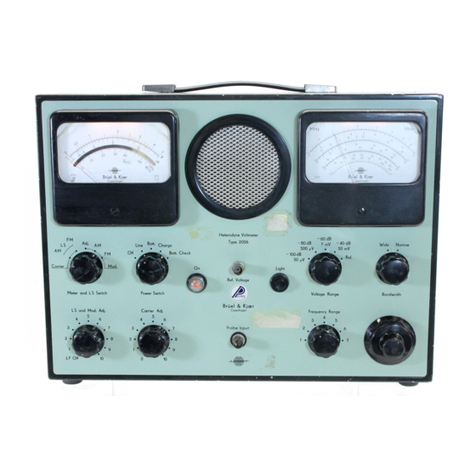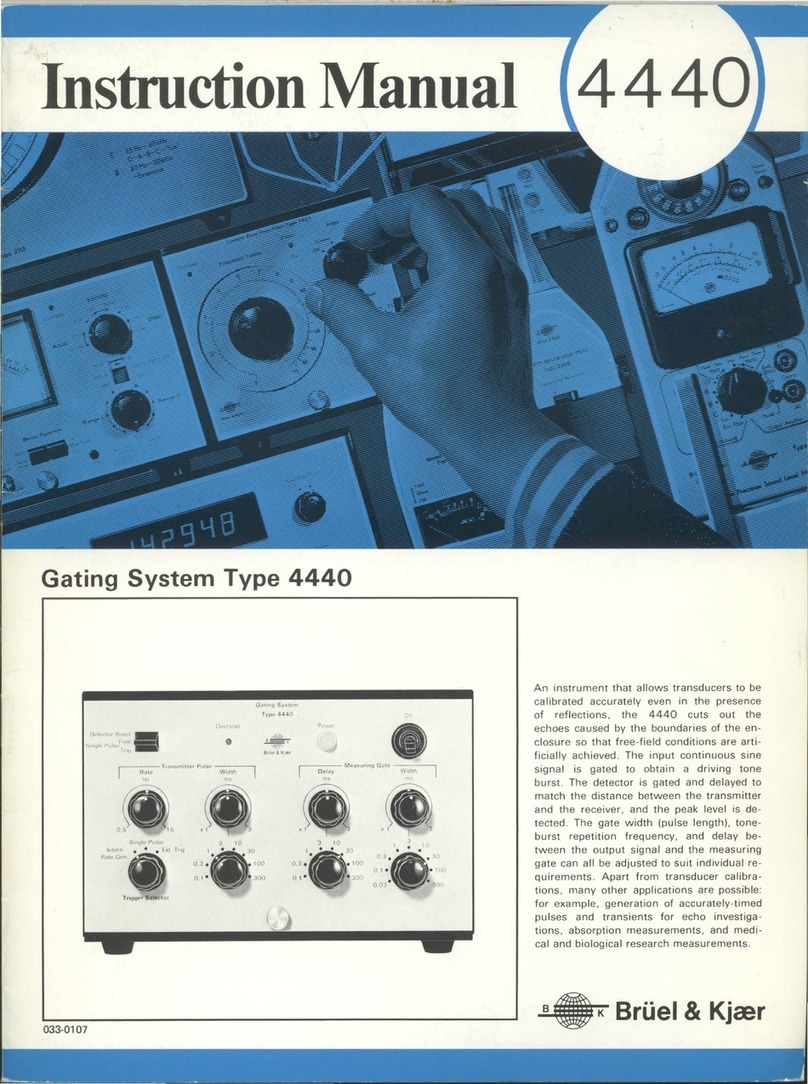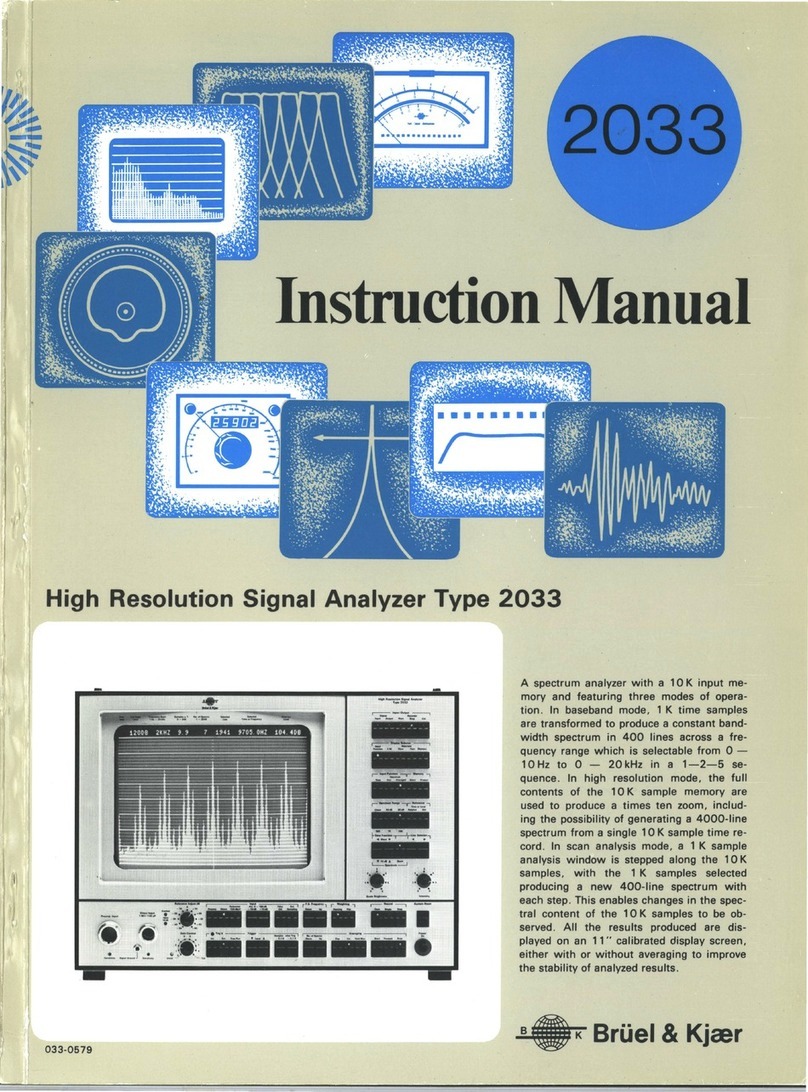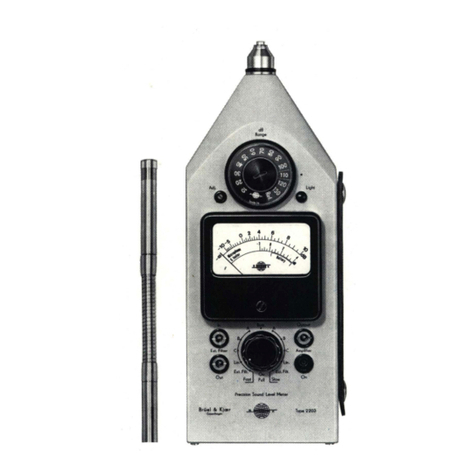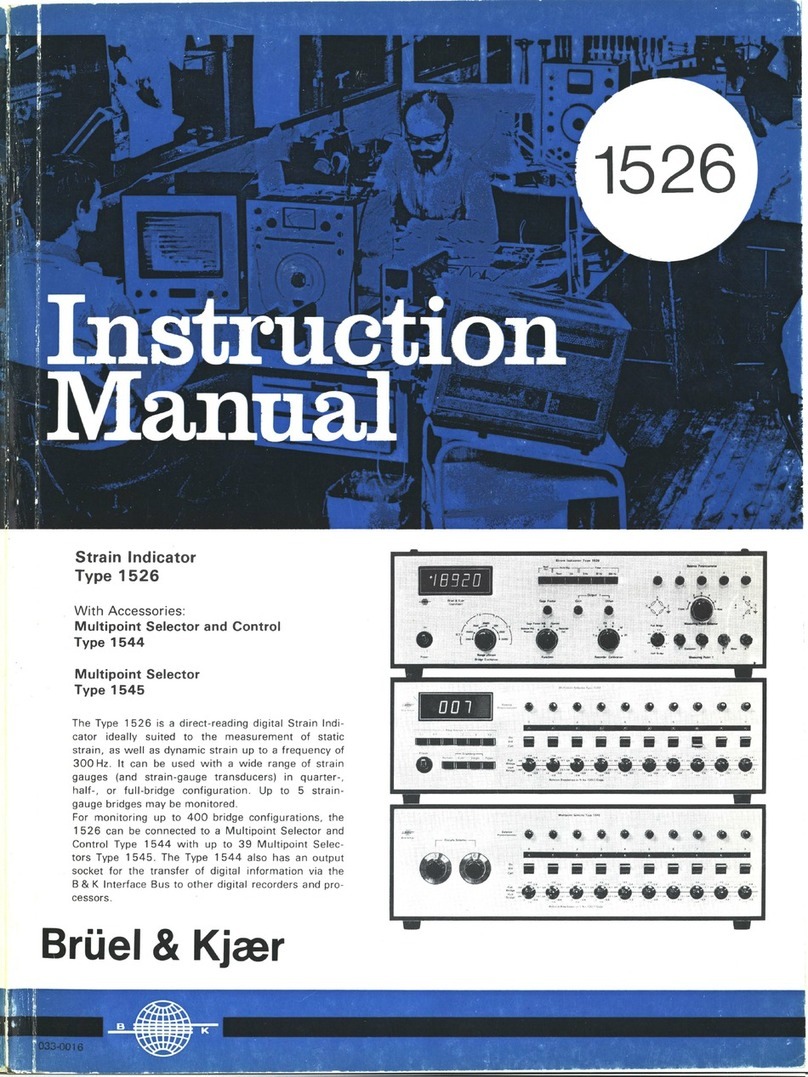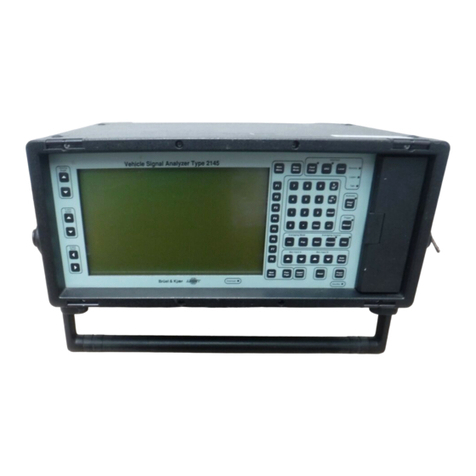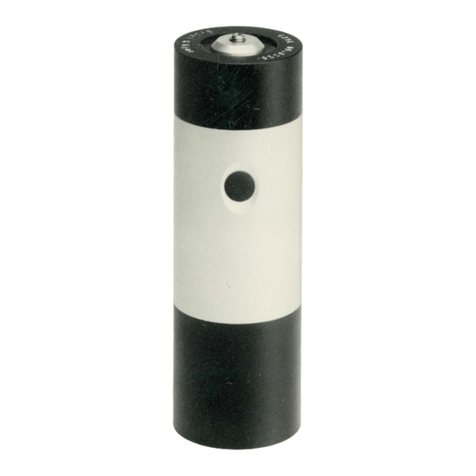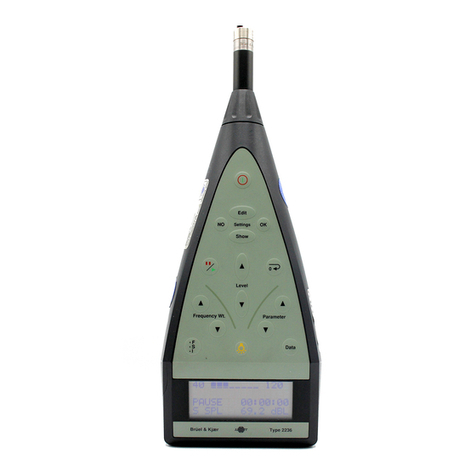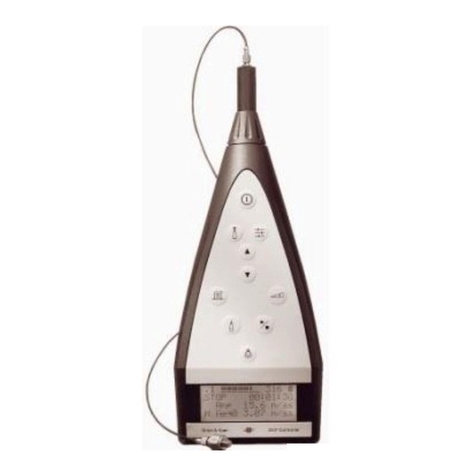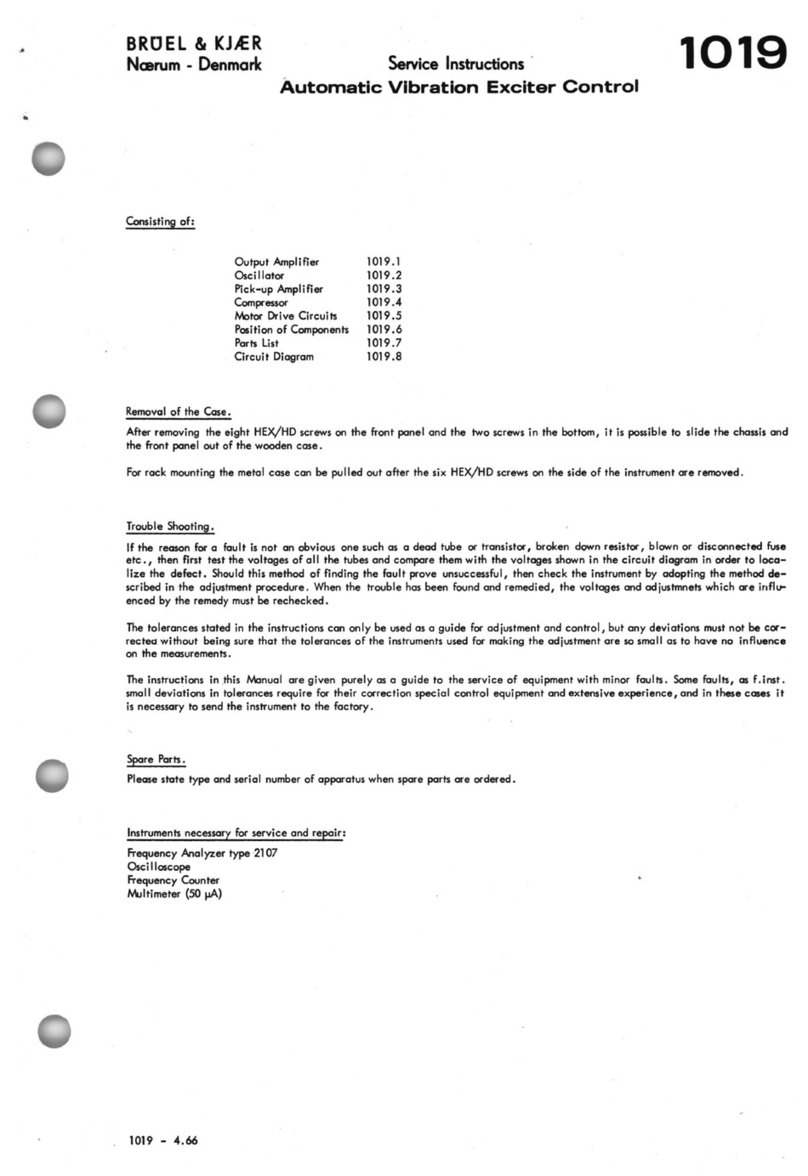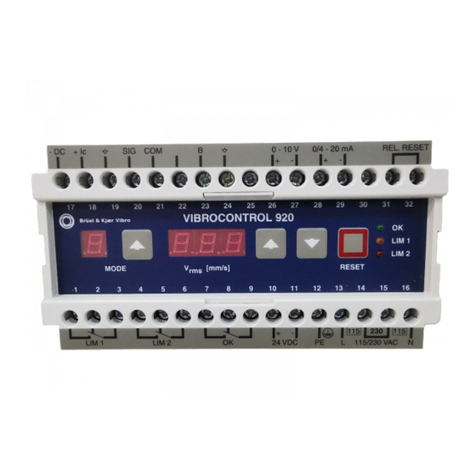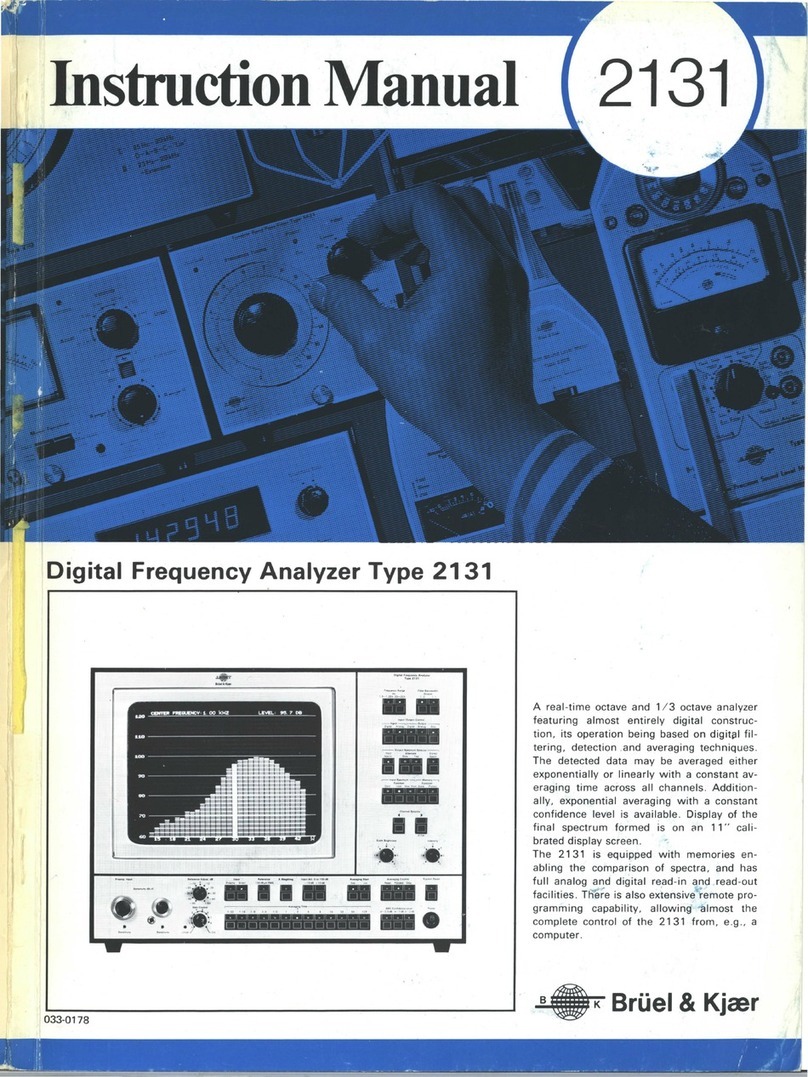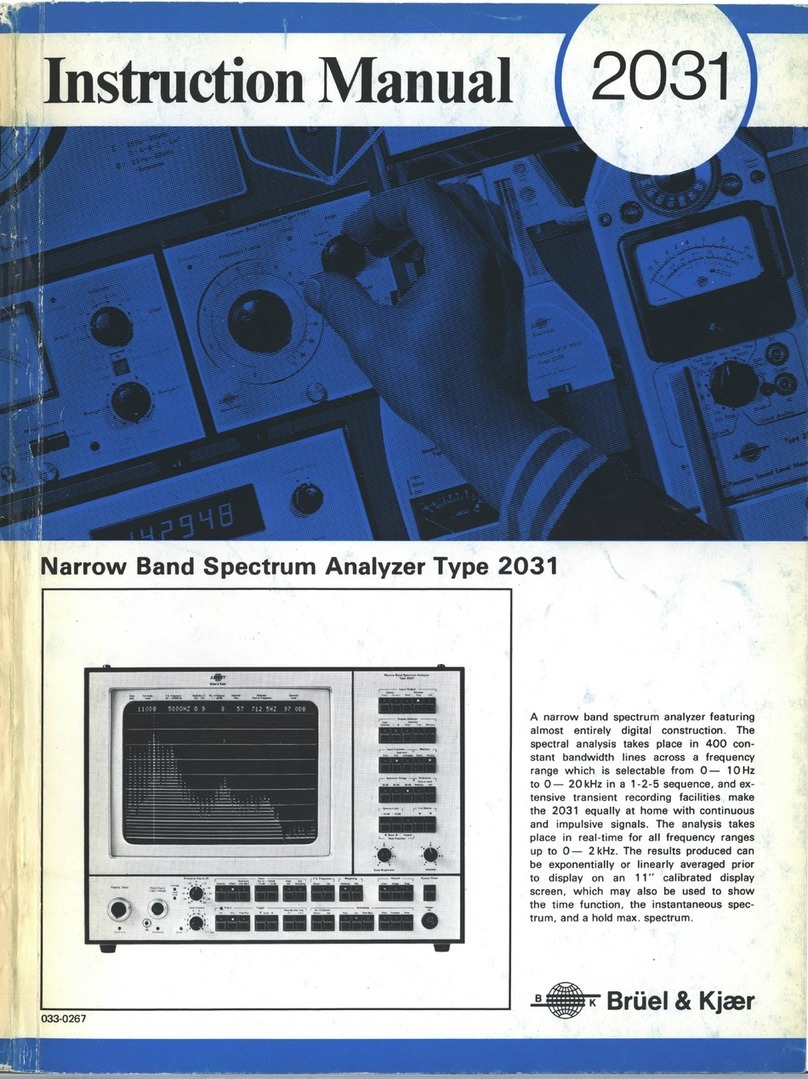
The
2513
and
2516
are
intended
for
four main kinds of application -
General
vibration
measure-
ments.
Vibration measurements are
valuable in many branches
of
industry.
Some examples of applications are:
shock measurement in rolling mills, leak
detection in pipes,
and
pulsation mea-
surements
in
pneumatic
and
hydraulic
systems. Fields of use include power
generation, mining, motor vehicles,
ships,
and
railways.
Condition
monitoring.
It
is
well
known
that
most kinds
of
machinery
failures are preceded by a rise in vibra-
tion level. Regular measurement of ma-
chine vibration level can be used
to
de-
cide whether
the
machine requires
maintenance. This can form
the
basis of
a systematic
and
economical
technique
The
Types
2513
and
2516
are
com-
pact
battery-powered
instruments
easily held
and
operated
in
one hand.
The
2513
measures
in
SI
units,
and
the
2516
in
g's
and
in/s. A
document
folder designed
to
contain
both
the
Vibration
Meter
and
an
A4
note-pad
--
,..,
Adaptor
I
UA
0641
Accelerometer
Ilia
Type
4384
•
Magnet..,_
UA
0642
-
Ferromagnetic
Disc YO
0070
Plug
JP
0213
l
tO
.t
•
l(jar
......
Type
211•
Fig.2.
The
interconnection arrangements
for the 2513
and
2516 (illustrated)
2
for scheduling maintenance.
It
is appli-
cable
to
a very wide range
of
industrial
plant, including machine-tools, steel,
board
and
paper
mills, chemical plants,
cement ovens, compressors, diesel en-
gines,
and
power stations.
Vibration
Severity
measure-
ments.
Vibration Severity is a
quantity
particularly useful in
the
evaluation of
the
running quality
of
rotating
and
re-
ciprocating machinery.
The
2513
and
2516 meet
the
requirements for
an
in-
strument
suitable for measuring Vibra-
tion Severity as laid down in ISO 2954
(1975). Vibration Severity criteria are
covered by ISO 2372, 2373
and
3945,
and corresponding national standards.
For quality-assurance personnel
and
technical
staff
engaged in buying or sell-
ing machinery,
the
2513
and
2516 pro-
vi~e ideal means of checking
that
the
for recording
measurements
taken
on
site is also
included
(Fig.l).
Each
Vi-
bration
Meter
is
supplied
with
a light-
weight Piezoelectric Accelerometer
Type
4384,
connected
to
the
instru-
ment
by a
sturdy
1,2 m coaxial cable
(see Fig.2).
Display
The
2513
and
2516
feature
a solid-
state
thermometer-type
display which
makes
them
especially easy
to
use
without
sacrificing accuracy.
It
con-
sists of a
column
of
41
red
light-emit-
ting
diodes (LEDs) covering a relative
amplitude
range of 1
to
100.
The
am-
plitudes
are
spaced
out
logarithmical-
ly,
thus
giving a
constant
accuracy
over
the
whole range.
The
LEDs, how-
ever,
are
equally spaced, so each suc-
cessive
LED
corresponds
to
an
ampli-
tude
11
%
greater
than
the
one below
it.
If
the
amplitude
measured
falls be-
tween
two
LEDs,
they
are
both
lit,
giving a resolution
of
6%.
The
display range
itself
can
be
switched
between
two
settings
differ-
ing
in
level by a factor
of
10, giving
an
overall
measurement
range
of
1000:1.
The
Leq
Concept
Anyone who has
tried
to
measure vibra-
tion with a conventional
instrument
will
have had
the
experience where
the
me-
ter
fluctuates so much
that
a kind of
visual average has
to
be
made of suc-
cessive readings.
It
is difficult
to
sustain
confidence in
the
validity ofsuch a mea-
surement,
and
in any case
the
"true"
level of such a fluctuating vibration
is
not
the
same
as
the
average reading.
What is needed is
an
indication of the
level which would have resulted in
the
same vibrational energy flow
at
the
measuring point, over a suitable period
of
time, as
the
fluctuating vibration
which actually occurred. This level is
widely known as
Leq
(for "Equivalent
Level").
vibration generated by a machine in op-
eration meets its contractual require-
ments. Because of
their
simplicity
of
op-
eration, only
the
briefest of introduc-
tions is needed before
the
user
starts
making accurate measurements with
the
2513 or 2516.
Hand-Arm
Vibration.
Of particu-
lar concern
to
manufacturers
and
users
of
portable power tools, and environ-
mental
health
authorities, are
the
ef-
fects of sustained exposure
to
vibration
transmitted
into
the
hands
and
arms of
their
operators.
The
2513
and
the
2516
incorporate
an
electronic weighting fil-
ter
to
permit measurements
to
.be made
of
the
overall level
of
exposure, in accor-
dance with
ISO/DP
5349 (Draft
1982-02-17) when used with a Charge
Attenuator available
to
order or a suit-
able alternative Accelerometer.
The
main
graduation
levels are
framed
in
"windows",
and
change
automatically
with
function setting. A
scale of decibel (dB)
graduations
is
provided in
addition
to
the
engineer-
ing-units scale.
The
60
s
Leq
facility
on
the
2513
and
2516
takes
the
vagueness
out
of
vibra-
tion
measurement
when
the
level is
fluctuating.
In
this
mode
of
operation,
the
display builds
up
an
indication
of
the
60s
Leq,
computed
by
mathemati-
cal
integration
from all
the
mean
square
levels occurring since
the
mea-
surement
started
(hence
the
name
"Integrating
Vibration
Meter").
At
the
end
of 60 s
the
measurement
is
termi-
nated
and
the
display
held
for a fur-
ther
60s.
After
that
the
instrument
is
automatically
switched off,
to
save
batteries.
The
operator
can
thus
write
down a single figure for
the
vibration
measurement,
with
complete confi-
dence
that
it
is a
repeatable
figure.
When
the
Leq
function is selected,
the
display simultaneously indicates
the
maximum
peak
value.
In
effect,
it
becomes two displays.
There
is no pos-
sibility of
ambiguity
because
the
max-
imum
peak
vibration
can
never be less
than
the
Leq
value (Fig.3).
Vel. &I I
-
SO
Reset
(Battl
f!'."'3-:
::--
30
•
On/Off
•
Fig.3.
The
display
of
the 2513, showing
Leq
and·Max. Peak indications simulta-
neously


